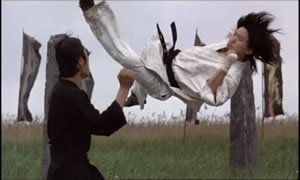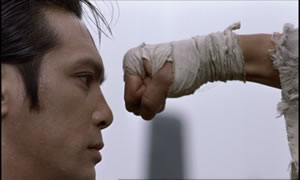Fighter in the Wind
(Baramui Fighter)
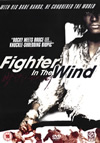
- Made: 2004
- Format: DVD
- Region: Region 2 PAL
- Release Date: 30 May 2005
- Company: Optimum Asia
- Length: 121 minutes
- Picture: Anamorphic 1.85:1 Widescreen
- Language: Korean / Japanese DD5.1 with Subtitles
- Extras: Interactive Menus, Action Diary, Cast / Crew interviews, music video, Trailers
- Classification: 15
Director:
Yang Yun-ho
Cast:
Dong-kun Yang, Aya Hirayama, Masaya Kato, Tae-woo Jeong, Doo-hong Jung
Fighter in the Wind draws inspiration from the real life tale of Karate expert Masutatsu Oyama (1922 -1994). Having previously emerged as a Manga series, Korean Director Yang Yunho cast Dong-kun Yang as Baedal / Oyama in a classic zero to hero tale. This film forms part of the recent emergence of Korea as one of the most innovative and challenging forces in world cinema.
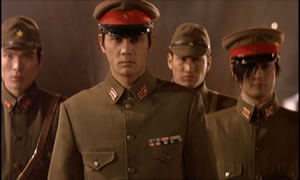

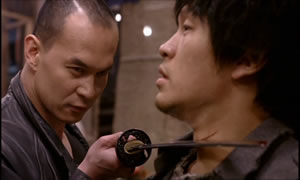
Choi Baedal is a Korean who travels to Japan in order to become a fighter pilot during WW2. On his journey he meets Chunbae, a happy go lucky scallywag who has managed to piss off the local Yakuza. Their adventure through the tumultuous world of Japan in the 1940's sees them being oppressed by the Japanese and the American occupied force. Baedal is then reunited by former master, Bumsoo, who puts him pack on the path of righteousness.
In a reaction to his years of humiliation and strife he starts to beat up American soldiers who are menacing Japanese women. He then launches a quest to become the best fighter in Japan . This becomes bloody and brutal, with his enemies increasing after every victory. His loyalties are further torn by his love for the beautiful geisha, Yoko. As the story unravels, the viewer starts to question whether he can defeat all the stands before him and whether he will ever find happiness with Yoko.
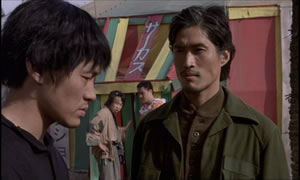

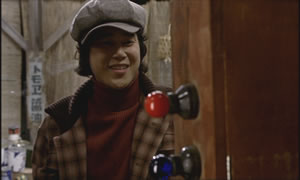
Fighter in the Wind is a manga inspired tale that blends a quest of individual combat with the greater struggle for freedom in the face of oppression. There are many links between Fighter in the Wind and the likes of Fist of Fury and Heroes of the East. The most obvious being the common theme of Japanese oppression and the emotional attachment to a love interest. Similar to Drunken Master, there is the personal revenge motive as well, with Baedal avenging his humiliating defeats that he suffered in his early days. Viewers will also note training and fight scenes completely lifted from Bruce Lee and Jackie Chan movies, including the fan favourite Dojo fight!
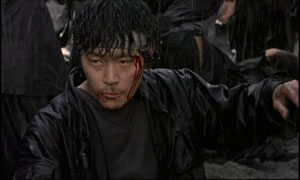

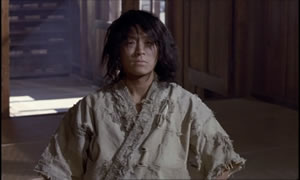
It is all starting to sound like a cliché ridden tribute to former classics, but this may be to miss the point. There is no doubt that many of the plot devices are taken from familiar territory but the end result is quite distinct from its predecessors. The film has a very modern feel supported by the sweeping cinematography and pumping soundtrack. Once Baedal starts to train on the snow topped mountains the viewer starts to see how Fighter in the Wind is trying to forge a path of its own. Heroes of the East (Shaolin Challenges Ninja) tried to show the grace and power of various Oriental martial arts with an underlying message of tolerance and respect. Fighter in the Wind contains a similar quest to overcome the Japanese martial arts world. What is distinctive is the way it is performed. Baedal is brutal and crude in his execution. He is not preaching a message of martial arts philosophy underneath his violence. In some ways his motives remain blurred throughout. There are too many overlapping themes to really understand his 'quiet hero' character. He is fighting oppression, he is fighting for pride, he is fighting for his murdered master, he is fighting because it is the only thing he can do and apparently he is fighting for a little boy's pride as well!
The end result is satisfying. Credit must go the way in which the film was captured on screen. It remains frustratingly inconsistent, but all the aspects are delivered with an assured touch. The production values are impressive and the editing remains fresh and original. Director Yong Yunho clearly has a taste for fighting in adverse weather conditions and inserting plenty of slow motion shots. The choreography fails to reach the dizzy heights achieved in late seventies Hong Kong , but that was never the objective. The fights are much closer to the Bruce Lee one-punch kill style action. Choreohrapher Jeong Du Hong provides a hard hitting blend of Taekwondo and Karate, which is occasionally undermined by Hollywood style editing.
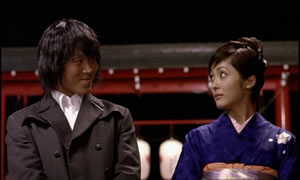

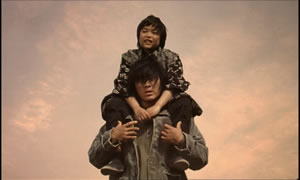
DISC:
The disc presentation is another impressive release from Optimum Asia. This is one of their stronger releases so far. The anamorphic 1.85:1 widescreen picture is of excellent quality. The DD5.1 audio track is in the original mix of Korean / Japanese with a good set of subtitles (i.e. readable and few errors). There are a few extras with an action diary, cast and crew interviews plus scene select and trailers. Overall, a strong package worthy of a strong title.
OVERALL:
It would be easy to dismiss this film as it borrows heavily from films it will never surpass. There are too many threads in the plot to really understand or empathise with the film, but it remains entertaining and innovative. If you can overlook the blatant nationalism and paper-thin depiction of the Japanese you have a film that looks great and delivers what it sets out to. The negatives could easily overshadow the plus points, but as long as you approach the film looking for a new and creative twist on the martial art genre you will not be disappointed.
Paul
